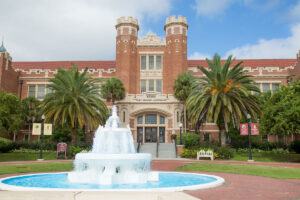
A motion was filed Tuesday in the Florida House of Representatives to begin the process of merging New College of Florida and Florida Polytechnic University into Florida State University and the University of Florida, respectively.
The motion, House Bill PCB EDC 20-03, would make the New College of Florida in Sarasota a satellite campus of FSU and Florida Polytechnic University in Lakeland a part of the University of Florida. This would cause each institution to lose their independent accreditation.
On Wednesday, the motion advanced in the House.
According to Rep. Randy Fine, R-Palm Bay, the high cost of producing a degree from two of the smallest schools in the Florida State University System, motivated the bill.
“If we can stop spending $180,000 per degree and start spending $20,000 per degree we could get nine kids educated for what we are presently paying to educate one. It’s a winner for our students and it’s a winner for the state,” Fine told ABC Action News.
He also mentioned that the small class sizes and campuses cause funds for running and maintaining the two institutions to be disproportionately larger compared to the flagship FSU and UF.
Both universities have issued statements rejecting the bill and expressing their wishes to remain independent.
Despite the current controversy, attempts to merge colleges — specifically the loss of independence of smaller colleges to larger ones — is not new.
During the late 1960s and early 1970s, Florida A&M University was under threat of losing autonomy to neighboring Florida State University. During this time, tension between the FAMU and FSU administrations and students remained even after the racial integration of FSU in 1963.
FAMU, the smaller, historically black and state-funded university, faced challenges with FSU and legislation barring the interaction of their students. A letter dated Aug. 30, 1962 from the Board of Regents — the governing body of the State University System of Florida at the time — banned former President Gore’s admission of white students in his school.
An excerpt from Leedell Neyland’s 1987 book “Florida Agricultural and Mechanical University: A Centennial History,” states: “The Board of Regents and the legislators calling for FAMU’s merger with FSU contended that FAMU did not have a clearly defined mission or ‘unique’ role and scope. On the other hand, these same officials did not require the white universities in the system to produce a definite or ‘unique’ statement of purpose and objectives.”
This only exemplified belief among some FAMU students that the proposed loss of FAMU’s autonomy was racially motivated.
“FAMU had a unique role in [providing education] to low-income, first-generation black college students,” said one FAMU alumni from the class of 1971. It was this vital role in the African American community that was used to defend FAMU’s need for independence.
When asked about the possible merger by the Times Union and Jacksonville Journal, Robert Mautz, a former chancellor of the State University System, said, “[FAMU] serves a public not otherwise served. [FAMU] encourages Negroes to come. They are encouraged to stay. There is individual attention to them out there… The leadership among the Negro community in the state is by and a large product of that university. It would certainly be a disservice to the Negro community to abolish it.”
Despite several legislative attempts to merge or otherwise undermine FAMU’s accreditation and autonomy, FAMU survived and still thrives today. With campuses less than a mile apart, however, negative sentiments from FAMU students remain about its neighboring university “across the tracks.”
“I went over there once and introduced myself as a FAMU student and it was two seconds before I saw someone scoff and roll their eyes at me,” says one engineering student of an experience she had before declaring her major. “Yes, we may have a joint school of engineering but they make sure that the people that take classes at FAMU and the ones that take classes at FSU are known to each other — and that goes for students and faculty.”
Another student shared a similar experience. “I was at a dining hall [at FSU] with one of my friends during freshman year. These random guys just sat at our table and asked what we were doing on [that] side of town. Just flat-out asked us. I was too angry to be embarrassed at the nerve they had,” said a FAMU English major.
Regardless of the time period, the divide between FAMU and FSU can still be seen decades after integration and the failed attempt to merge the universities. The current struggles that Florida Polytechnic University and the New College of Florida are facing is reminiscent of a time when Florida A&M University was under threat of losing its identity to a larger, heavily funded, and “prestigious” flagship public university.